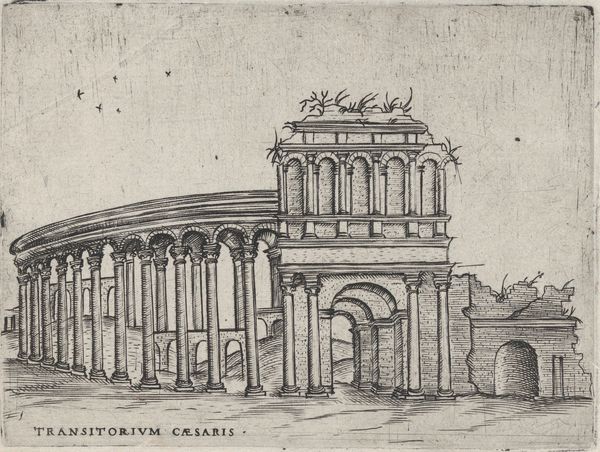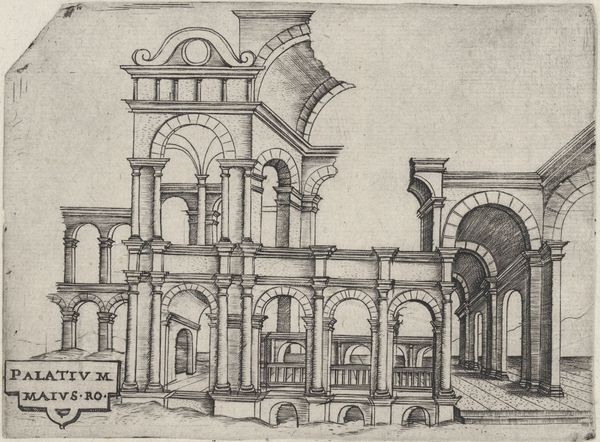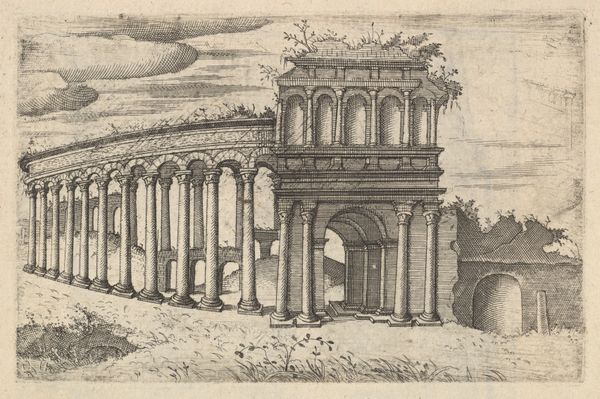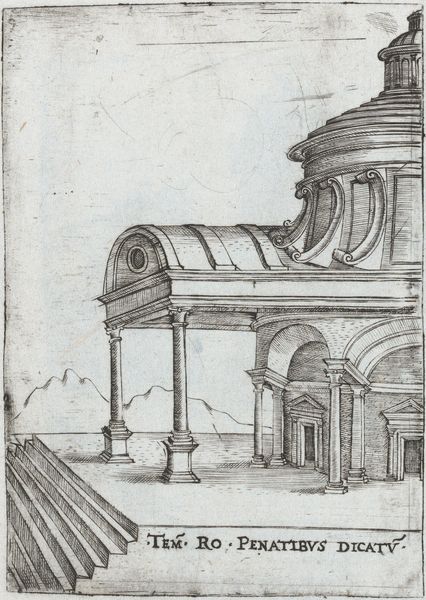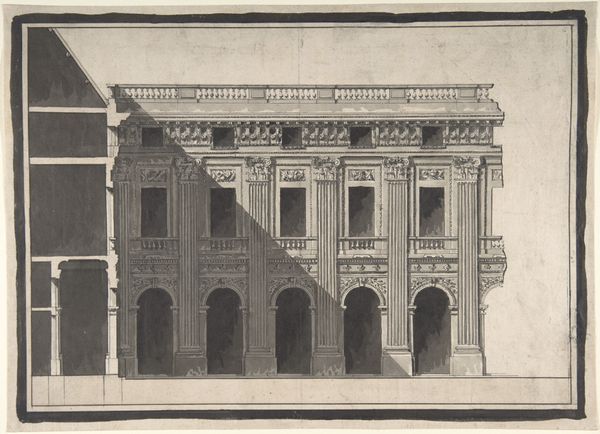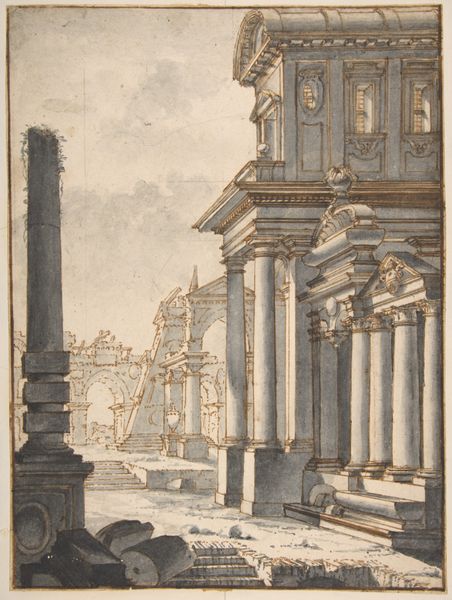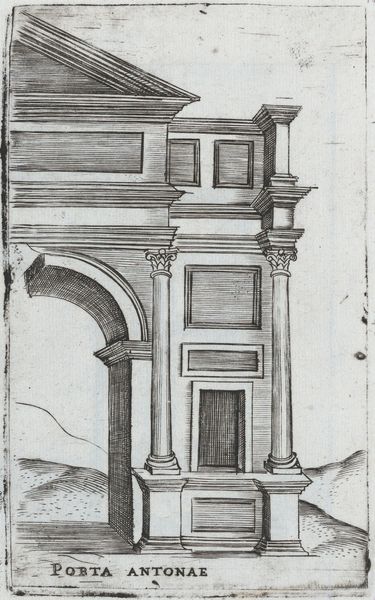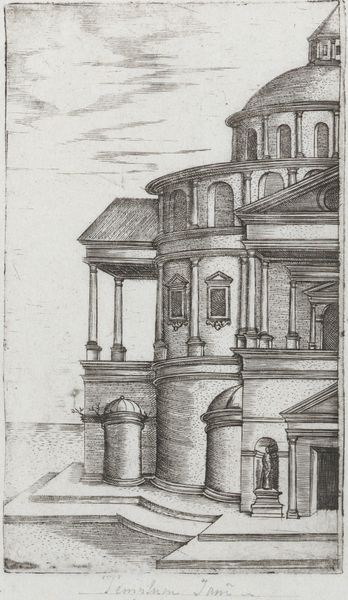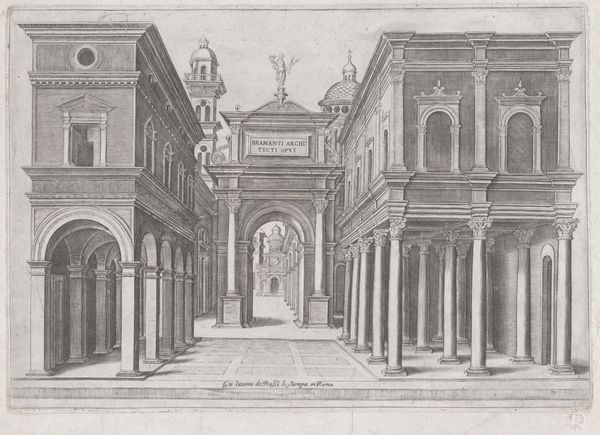
Tenplum Iovis Ultoris, from a Series of Prints depicting (reconstructed) Buildings from Roman Antiquity 1530 - 1550
0:00
0:00
drawing, print, engraving, architecture
#
drawing
# print
#
11_renaissance
#
history-painting
#
italian-renaissance
#
engraving
#
architecture
Dimensions: Plate: 5 7/16 × 3 3/4 in. (13.8 × 9.6 cm) [edges of the plates are not straight, the width varies between 9.4 and 9.6cm]
Copyright: Public Domain
Curator: Here we have "Tenplum Iovis Ultoris, from a Series of Prints depicting (reconstructed) Buildings from Roman Antiquity," an engraving dating back to somewhere between 1530 and 1550, courtesy of the intriguing artist known only as Monogrammist G.A. & the Caltrop. Editor: My first thought? Melancholy. It's a grand, crumbling beauty. Those stark lines create a feeling of loss, like witnessing the echo of an empire. Curator: Absolutely. What you’re responding to is a tension the artist has captured perfectly. The engraving meticulously reconstructs this temple, likely from ruins the artist observed. It's both an act of preservation and a meditation on impermanence. Editor: Yes, that dance between ruin and reconstruction is fascinating. It’s making me consider what it means to try and fix something broken. Were they thinking about more than just buildings when they made this? Did they believe society could, or should, be rebuilt too? Curator: A brilliant point! We can read into that, I think. The Italian Renaissance was consumed by Classical ideals, so this architectural image presents the values and forms of a previous civilization, as though to restore their presence in their contemporary world. The presence of damage, on the other hand, allows for a perspective on temporality, and it can point out that the past will always remain the past. Editor: Look at the meticulous detail in those columns, contrasted with the jagged edges of the broken walls. It is less a statement and more like an open-ended question. I suppose in our present moment, such a focus feels incredibly resonant. What do we keep? What do we let go? What do we try to rebuild? Curator: Nicely put! There is this tangible sense of yearning woven into the ink, the wish to keep the spirit of classicism and history alive. Editor: And that spirit persists, even as the stone crumbles. Thanks for the tour, that was incredible. Curator: Thank you, I was hoping we’d have a breakthrough on our reflection over time here!
Comments
No comments
Be the first to comment and join the conversation on the ultimate creative platform.
